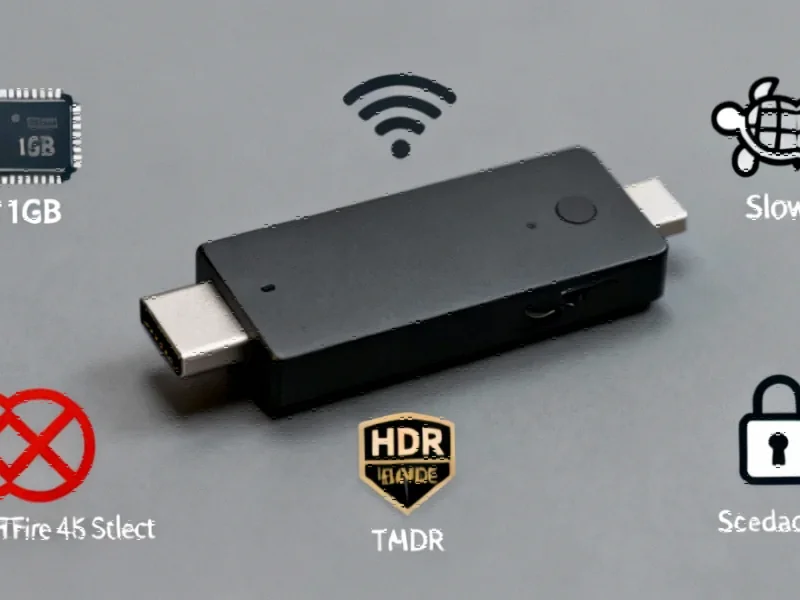Breakthrough in Optical Computing Materials
Scientists have developed revolutionary 3D-printable photochromic materials that enable the creation of all-optical processors, according to research published in Light: Science & Applications. The materials reportedly combine optical transparency with structural stability, opening new possibilities for light-based computing and data storage applications. Sources indicate this technology represents a significant step toward fully organic computational systems that operate using light rather than electricity.
Table of Contents
Material Composition and Properties
The photochromic materials are composed of bisphenol A ethoxylate dimethacrylate (BEDMA) as the matrix material and diphenyl(2,4,6-trimethylbenzoyl) phosphine oxide (TPO) as the photoinitiator, according to the research. Analysts suggest the BEDMA matrix provides both optical transparency in the visible spectrum and high structural stability during UV photopolymerization. The pre-polymer system is reportedly doped with either SP or BTF6 photochromic molecules, which undergo reversible color changes when exposed to different light wavelengths.
The report states that when illuminated with UV light, the 3D structures demonstrate characteristic colorless-to-colored transitions. Both the merocyanine (MC) form of SP and the closed form of BTF6 exhibit fluorescence, with photoluminescence peaks at approximately 654 nm and 617 nm respectively. Researchers found that exposure to green light effectively reverses the process, completely restoring the original optical properties of the materials.
Enhanced Stability and Performance
Sources indicate the printed photochromic materials demonstrate exceptional stability compared to previous systems. According to the analysis, SP/MC samples maintained approximately 70% of their initial differential transmission after 10 UV/green exposure cycles. The BTF6 printed samples showed even better performance, reportedly retaining 85% of their initial value under the same conditions.
Perhaps most remarkably, analysts suggest BTF6 samples maintained their spectral characteristics virtually unchanged after twelve months at ambient temperature, indicating excellent long-term stability. This property makes the material particularly suitable for encoding and data storage applications where persistent information retention is crucial.
Optical Computing Capabilities
The research demonstrates how these materials can perform arithmetic operations using light. According to reports, the system operates by using UV pulses to dynamically reconfigure the photochromic device, changing the intensity of transmitted probe light through discrete, well-defined levels. The initial state can be restored through green light exposure, enabling repeated computational cycles.
Researchers reportedly demonstrated simple arithmetic operations including addition and division. For addition operations, sources indicate the system uses UV pulses corresponding to numerical values, with green reset pulses triggered when a threshold intensity level is reached. The result is determined by the number of reset pulses (representing tens) and the final probe intensity level (representing units).
Advanced 3D Architectures
The 3D printing capability enables complex geometric configurations that enhance processing capabilities. According to the report, researchers created spiral-shaped components containing multiple photochromic processors that can be stacked vertically for serial operations or arranged in arrays for parallel processing. Each photochromic element can be individually addressed to create multiple logic gates.
Analysis suggests these configurations enable the creation of NOT and NOR gates by strategically using UV light inputs and probe beam monitoring. The spiral structures photographed in the research reportedly support NOT gates at each step element, while placing two photochromic spirals in series creates NOR gates when appropriate threshold values are selected for probe intensity.
Future Applications and Implications
The development of 3D-printed photochromic materials for optical processing reportedly opens new possibilities for fully organic computational systems. According to analysts, the technology’s ability to dynamically control light signals with high spatial and temporal accuracy, combined with the materials’ stability and 3D printability, suggests potential applications in optical computing, data storage, and signal processing.
Researchers suggest the technology could lead to new computing architectures that leverage volume combination capabilities and parallel processing. The materials’ compatibility with various photochromic molecules and the ability to fine-tune their properties through chemical modifications indicate potential for further performance enhancements and specialized applications in the future.
Photochromism and optical pulse technologies form the foundation of these developments, according to scientific sources familiar with the research.
Related Articles You May Find Interesting
- Eurostar’s Double-Decker Fleet Signals New Era for Channel Tunnel Operations
- Sheffield Domestic Abuse Helpline Sees Record Surge in Calls Amid Rising Cases
- The Great Bubble Paradox: Why Markets Keep Dancing While Warning Lights Flash
- Subsea Computing Breakthrough: China Deploys World’s First Wind-Powered Underwat
- Netflix Bets Big on Generative AI to Reshape Streaming While Industry Grapples W
References & Further Reading
This article draws from multiple authoritative sources. For more information, please consult:
- http://en.wikipedia.org/wiki/Alpha_decay
- http://en.wikipedia.org/wiki/Chi_(letter)
- http://en.wikipedia.org/wiki/Photochromism
- http://en.wikipedia.org/wiki/Electromagnetic_spectrum
- http://en.wikipedia.org/wiki/Pulse
This article aggregates information from publicly available sources. All trademarks and copyrights belong to their respective owners.
Note: Featured image is for illustrative purposes only and does not represent any specific product, service, or entity mentioned in this article.



